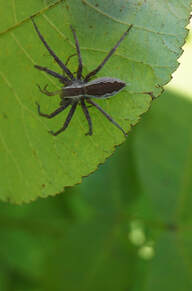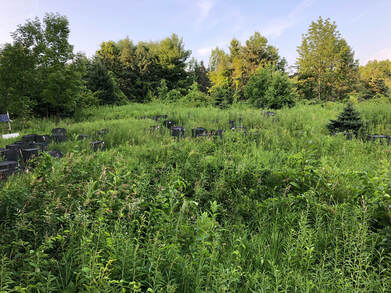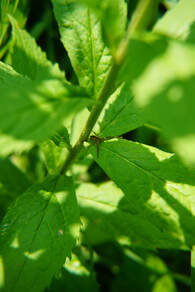Species Interactions in Food Webs
Ecological communities can be organized into food webs in which species are inextricably linked within a network of energy flow. Conceivably, all organisms in the network—plants, herbivores, carnivores and detritivores—are functionally predators of resources and resources for predators. From this conception of ecological communities stems a fundamental paradigm for success in the evolutionary-ecological game of life. Namely, individuals ought to strike an adaptive balance between fitness gains from resource consumption and fitness losses from the risk of being consumed. Research in the lab focuses on how this evolutionary adaptive game determines the nature and strength of food web interactions, with cascading effects on community assembly and nutrient cycling through ecosystems.
Soil food webs, nitrogen cycling, and decomposition in eastern temperate forests
Researcher: Janey
Vegetation is often thought of as the main driver of nutrient cycling and decomposition in forest systems. However, vegetation communities interact in complex ways with the soil food webs below them. These above and belowground linkages may play a key role in ecosystem processes such as nitrogen cycling and decomposition. Soil food webs are composed of many trophic levels including predators, detritivores and fungivores. Predators in food webs likely have strong effects on nutrient cycling and decomposition by controls populations of players in the food web. Ground beetles are top predators in the soil food and likely control populations of worms, mites, fungus, seeds, and other smaller prey. However, their trophic interactions and following effects on nutrient cycling in forests in unknown. Janey’s research at the Yale Myers Forest in eastern Connecticut investigates the role of function groups of ground beetles on nitrogen cycling and decomposition. She is conducting a tracer experiment on the soil food wed with a stable isotope of nitrogen by tracing the flow of nitrogen from tree leaf litter, to ground beetles, and the vegetation communities above.
Intraspecific variation and species interactions
Researcher: Nat
A central point of fascination for ecologists and evolutionary biologists alike is the variation across species and between individuals. Yet, models of species interactions in food webs largely ignore variation between individuals and instead assume equal variance by categorizing both individuals and species into broad functional groups. In her master's, Nat embraced the ecological complexity of intraspecific variation by examining the role of animal personality in food web interactions. Animal personality has consequences for the outcome of species interactions and may be an important driver of ecosystem processes. She worked primarily with old-field arthropods (Orthoptera and their spider predators) at Yale-Myers Forest and throughout New England.



